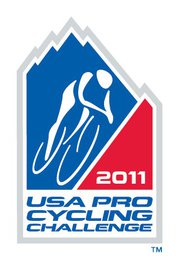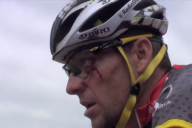Editor’s note: We are grateful that Neil Browne has allowed us to reprint this editorial piece he first published on his website at the beginning of the USA Pro Cycling Challenge. The ongoing PR difficulties the race is facing only highlight his points more clearly.
After months of press releases and name changes, the USA Pro Cycling Challenge stage race is upon us. The prologue starts in Colorado Springs on a mostly downhill course which has team mechanics scrambling for 60-tooth big-rings. Even before Carlos Eduardo Alzate Escobar of Team Exergy took his first pedal strokes down the starting ramp to kick-off the seven stage race there have been some issues.
A high-profile stage race in Colorado has been missing since the Coors Classic. The terrain and conditions of the state make cycling a natural fit. With the blessing of then-Colorado-Governor Bill Ritter and part-time resident Lance Armstrong, the concept of a stage race in the Centennial State was a lock. What can go wrong when you have a politician and one of the most recognizable athletes in the world endorsing an event? A lot has changed.
As you’re probably aware, the current name of this event is a cluster. USA Pro Cycling Challenge presented by the Millennium Promise? What does that even mean? The name sounds like a crazy Japanese game show. I can hear the announcer now, “In order to move on to the speed round Leopard-Trek rider Andy Schleck needs to stuff 10 water bottles down his jersey and navigate this downhill slalom in 30 seconds. If not, he’s eliminated!” Also, the Millennium Promise? Sounds like a secret society right out of a Dan Brown novel.
One problem is that there is another Tour of Colorado and the promoter was willing to go to court to fight to retain the name rather than give it up. The other initial stumbling block was that Quiznos, the presenting sponsor, had fallen on hard times. Also, Quiznos was either unable, unprepared, or just naïve on how to organize an event of this scope. Speaking to several people there were serious concerns that the race would even start.
Then there was the sudden re-retirement of Armstrong after this year’s Tour Down Under. If you remember, on the steps of the Colorado State Capital Building a newly un-retired Lance stated, “My days in top-level European cycling are done. But I can’t say I won’t do events that help causes that I care about. We’ll never say never.” Sure it was a lukewarm commitment, but it was enough to get the ball rolling on the project because let’s face it – if you can get Armstrong to your event it is guaranteed press. A couple of sources told me that two major sponsors were lined up to continue the Tour de Georgia, but one of the conditions hinged on Armstrong competing. No Armstrong – no Tour de Georgia. The seven-time Tour winner was a valuable part of the Pro Challenge equation for success. But that was 2010.
Fast forward a year later and the Armstrong brand has taken the same type of beating that Lance himself dished out on the slopes of France to his adversaries. Bicycling Magazine editor-at-large Bill Strickland penned a piece in the magazine stating that he now realizes Armstrong had doped during those Tour victories – something that most cycling journalists had suspected for years but hadn’t publically written. The news magazine show “60 Minutes” interviewed Tyler Hamilton, who stated that he had witnessed and participated in organized doping during his time at the US Postal team. Not long afterward there was the Cache Cache restaurant incident that portrayed Armstrong as a bully and caused the FBI to pay a visit to the sleepy town of Aspen to investigate the possibility of witness intimidation. Brick by brick public perception of the man who re-ignited cycling in this country, and arguably the world, was falling apart. By this time Armstrong had retired again as a professional cyclist. So where does this leave us now?
Several months ago I was approached about writing blogs leading up to the race, during the race, and perhaps post-event as well. I spoke to the person in charge of the public relations and told her that whoever writes about this event will need to be spot-on or it will seem like an amateur hour. Those were my exact words. She agreed and I sent her a proposal. In the end they hired another company to handle that aspect of promotion, but not before some very elementary mistakes were made in press releases and tweets. Funny enough, she asked me how many followers I had on Twitter making it obvious that they were trying to generate as much social media buzz behind the race as possible.
The tweet campaign by USA Pro Cycling Challenge has been spotty at best. One was so poorly-written that it suggested Christian Vande Velde had won the 2011 Tour de France. Other tweets have used various hashtags to denote the race, causing confusion. Is it #uspro, #usapcc, #usapro, #USAProChallenge? A press release regarding the classification jerseys stated that Davis Phinney was the first American to win a stage in the Tour de France (Greg LeMond actually was in 1985). Very recently, there was a typo in a press release regarding the amateur time tria [sic]. Biographies of some riders had been lifted straight from Wikipedia (Fränk Schleck’s bio). Speaking of bios, on the race web site, Leipheimer’s photo shows him in an Astana kit! To get the correct photo all it would have taken would have been one email to the press person at RadioShack and they would have had several images to choose from. Some of these may seem like small mistakes, but their serious dependency on Wikipedia (the obvious source that the USA Pro Cycling Challenge used for information regarding Phinney being the first American to win a Tour stage), in addition to the lazy mistakes shows they are unfamilar with the subject of bicycle racing. If you want your event to be considered the best, there can be ZERO room for mistakes such as these. If you want your event to be considered a regional race promoted by someone with minimal budget – job done.
Not everything, though, is doom and gloom. While they might have skimped on researchers, they ponied up to bring some of cycling’s biggest riders to Colorado. Unfortunately, if you watched the press conference on Sunday you realized that they were already using the excuse of jet lag, coming from the Tour de France, and the altitude for possible poor performances. The one strong favorite, RadioShack’s Levi Leipheimer, was a no-show at the press conference. The reason given was he was reconnoitering the time trial course. Another reason I heard was that he didn’t want to face the press and answer any awkward questions regarding the ongoing doping investigation or perhaps what team might employ his services for 2012. But another strong favorite was tucked into the top corner of the daïs – Sergio Henao of Gobernacion De Antioquia-Indeportes Antioquia. The Colombian team had shown their strength at the recent Tour of Utah and everyone on that daïs knew it. Tom Danielson stated that the South American team was going to cause chaos. Of course everyone wants the best rider to win, but can you imagine the public relations disaster if Henao finishes in Denver wearing the checkered yellow jersey?
For this race to get a foothold in America it needs to have an American win. Before the Tour of Utah very few people knew of Henao or what he was capable of. Now he’s a favorite on a team no one this side of the equator had heard of until a couple of weeks ago! And as I cruised through my Facebook feed, one retired pro who lives in Colorado wrote about the race, “So far it’s been the best kept secret of the 2011 season!” The Colorado Springs Independent wrote an interesting piece regarding the buildup to the race and that the reason for the low-profile was the US Women’s Open Golf Tournament at The Broadmoor was bogarting the media. Then there was the white elephant in the press conference – no Lance Armstrong.
As dignitaries took turns at the podium giving thanks to various people in the race organization as well as to both the present and past Colorado governors, there was not a mention of Armstrong. Remember, he was the one a year ago who got the ball rolling and stood on the Capitol Building steps announcing it to the press, which was then followed by a “tweet ride.” Armstrong tweeted that the start of the school year was the following day which made travel to Colorado impossible, but he promised to be at the race Tuesday. It will be interesting to see what capacity the Armstrong brand will be used to promote the race. In a team car, standing on the grandstand talking to the masses, or peeking out of the team bus window?
Regardless of these first year stumbles I’m hoping the USA Pro Cycling Challenge can overcome these issues and move forward. And oh yeah, don’t get me started on the disaster of the category leader’s jerseys…
















No Comments